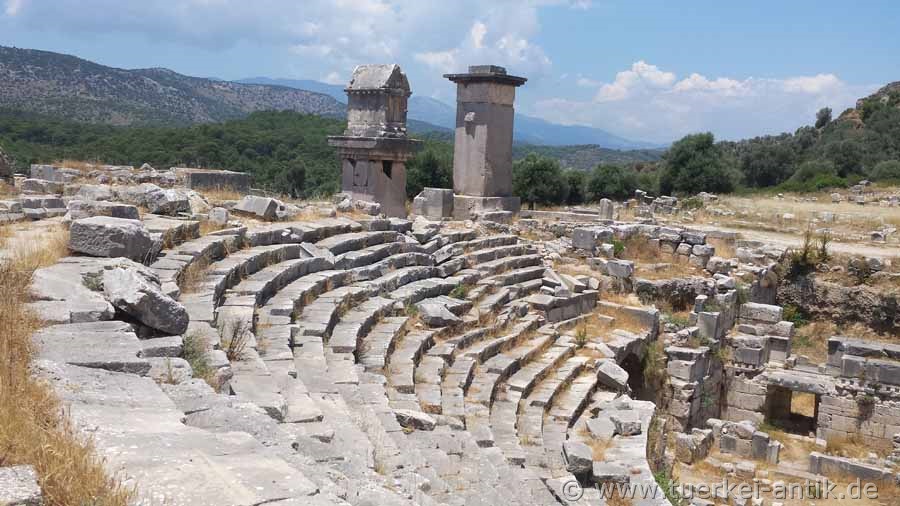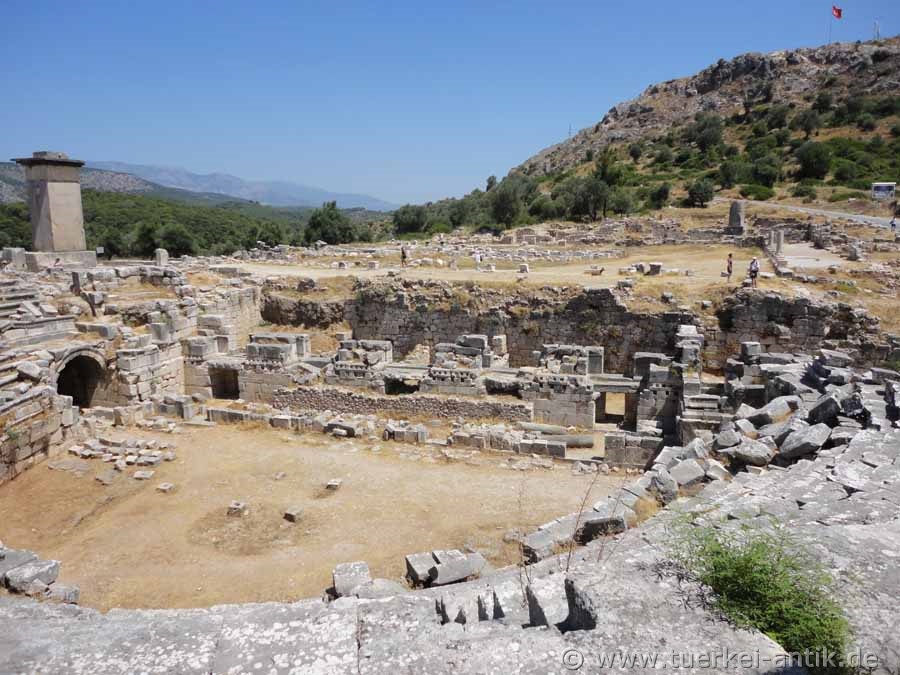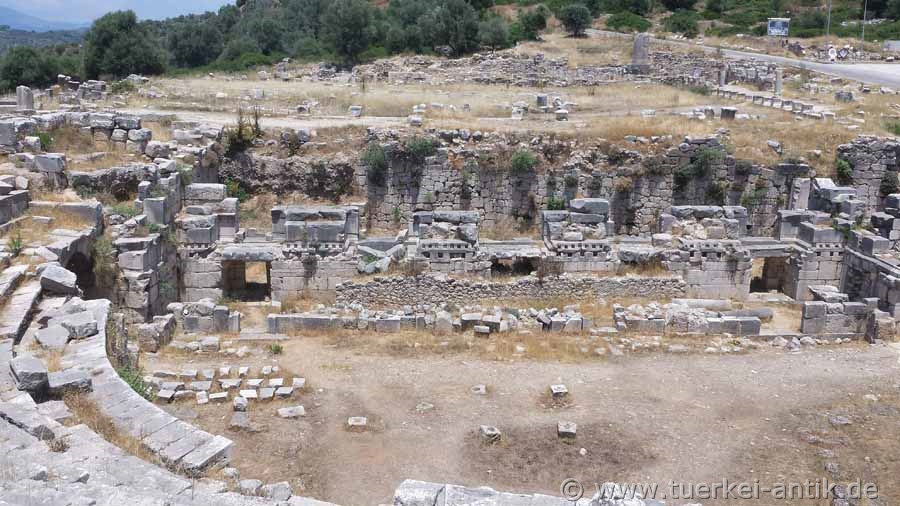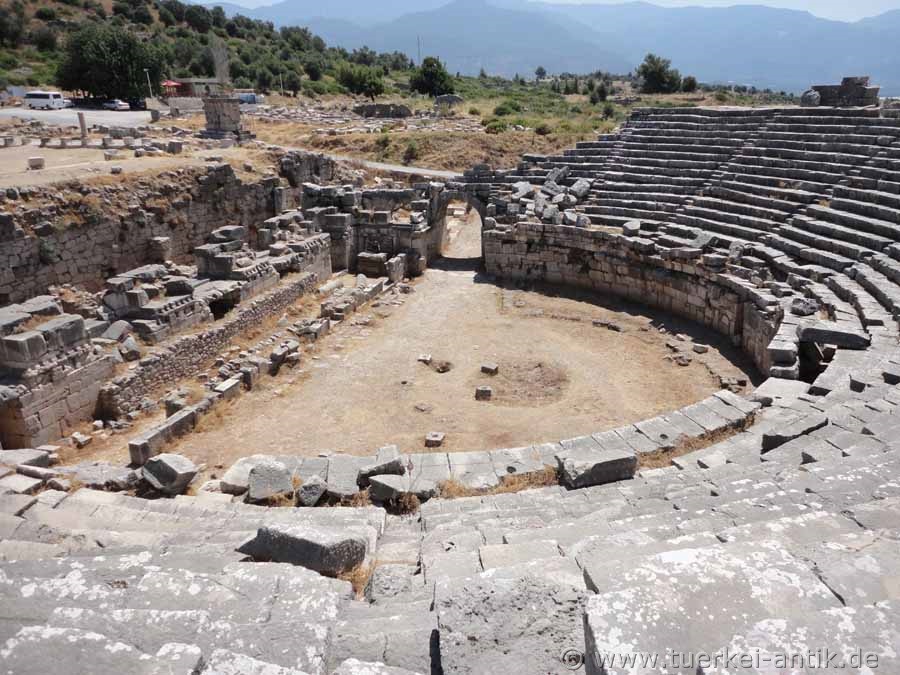 |
|
Ancient Theater in Turkey Xanthos |
||||||||||||
 |
|
|||||||||||
|
||||||||||||
|
The originally Greek theatre of Xanthos was built in the 2nd century BC. After the devastating earthquake in 141 AD, it was converted into a Roman theatre. |
||||||||||||
| The history of Xanthos: | ||||||||||||
|
The history of Xanthos spans nearly 1800 years and is characterized by the struggle for independence and autonomy. At the head of the Lycian League and during the Roman Empire, the city gained special importance. It was rediscovered in 1838 by the English archaeologist Charles Fellows - since then many finds have been found in the British Museum in London.
The ancient city of Xanthos and the associated temple district of Letoon, the capital and federal sanctuary of the Lycian League, are at the heart of Lycia's history. In addition to important remains of temples and urban buildings, Xanthos stands for a number of unique Lycian monuments whose tombs, pillar tombs and sarcophagi are richly decorated with reliefs and sculptures. Xanthos and Letoon lie about 65 km southeast of Fethiye and have been part of the UNESCO World Heritage since 1988. Although already inhabited since the 8th century, this city only enters history in Herodotus' account of the events of the year 545 BC. In a desperate defensive struggle against the troops of the Persian commander Harpagos, the Lycians retreated to the fortified city and fortified themselves. The men collected their wives, children, slaves and all possessions in the castle of the Acropolis and burned them down completely. They resolutely dared a failure, in which all were killed by the Persians. According to Herodotus, only 80 families survived because they were outside the city at the time of the Persian attack. Another major fire was the result of the Athenian conquest of Xanthos around 470 BC by the commander Kimon. The following dependence on Athens ended the Persian city prince Kherēi 429 B.C. with a victory over another fleet expedition of Athens, which was led by Melesandros and which fell in battle. This triumph is described by the inscription pillar of Xanthos. In the following 100 years under loose Persian sovereignty Xanthos blossomed - the city area was extended and the preserved splendid tombs and monuments were built. Conquered by Alexander the Great in 334/333 B.C., the city soon fell under the rapidly changing rule of the subsequent Diadochian empires. 188-168 B.C. the city was under the rule of Rhodes. From then on Xanthos stood at the head of the Lycian League and cultivated friendly contacts with Rome. The next catastrophe, which was regarded by contemporaries as a repetition of the tragedy of 545 B.C., occurred in 42 B.C. In the turmoil of the Roman civil war Brutus sought to raise troops and collect money. The Lycian troops were defeated, the city besieged and again the Xanthians burned down all buildings with women and children and killed each other. This was also recorded in Rome with shock. First under Marcus Antonius, later under Vespasian, the city was rebuilt, equipped with theatre and Agora (market place) and enjoyed permanent imperial protection and promotion. These buildings were neglected in Byzantine times, when the population - as everywhere in Asia Minor - had to retreat to the Stadtberg and expanded it with the antique components to a fortress. Since the Arab incursions from the 7th century onwards, Xanthos was largely abandoned and sank to an insignificant village. |
||||||||||||
 |
||||||||||||
 |
||||||||||||
 |
||||||||||||
|
|
||||||||||||
|
|
||||||||||||
|
|
||||||||||||
|
|
||||||||||||
|
|
||||||||||||
|
|
||||||||||||
|
|
||||||||||||
|
|
||||||||||||
|
|
||||||||||||
| Photos: @chim, Graeme Patrick Houlden | ||||||||||||
| Translation aid: www.DeepL.com/Translator | ||||||||||||
| Source: Wikipedia and others | ||||||||||||
|
|
||||||||||||

